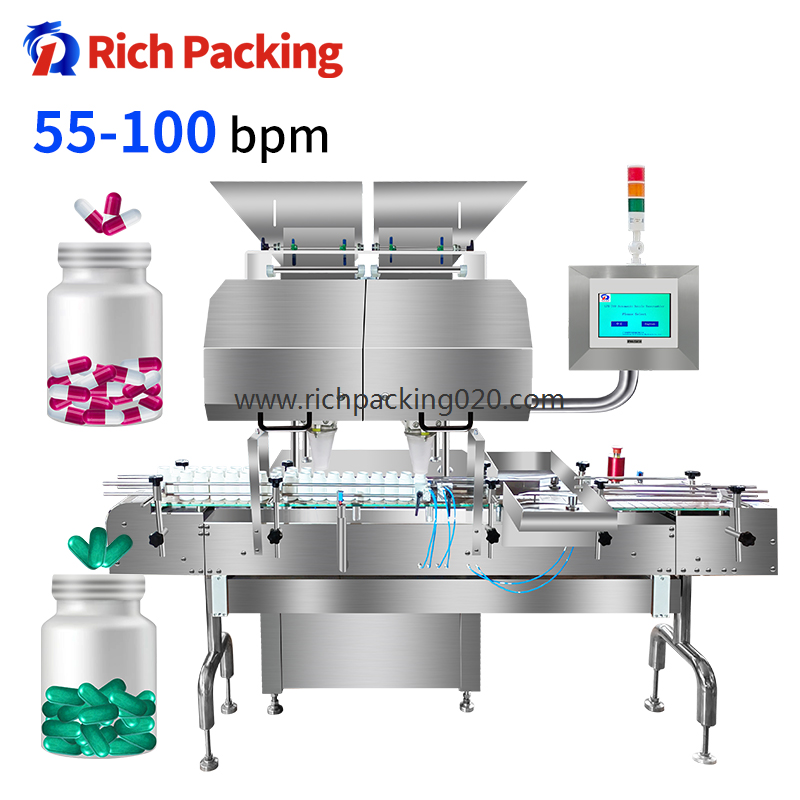HOT PRODUCTS
Details
 Home
> NEWS
> Industry News > Details
Home
> NEWS
> Industry News > Details
Selection of stainless steel materials commonly used in pharmaceutical machinery
Selection of stainless steel materials commonly used in pharmaceutical machinery
1. Material requirements for pharmaceutical equipment for pharmaceutical processes
People pay attention to the fact that pharmaceutical equipment materials should be “easy to clean or disinfect, corrosion-resistant, chemical changes or drug adsorption”, and don’t forget another material selection principle. This is the effective control of insoluble particles.
In the medicine, the particles are mainly dust particles, metals or other particles. The presence of the particles directly affects the quality of the medicine and endangers people's lives. A large number of clinical data indicate that if the drug is contaminated by 7-2 μm dust particles, especially intravenous drugs, it can cause pyrogen reaction, pulmonary arteritis, microthrombus or foreign body granuloma, which can cause serious death. Therefore, in 1985, the Chinese Pharmacopoeia first limited the insoluble particles of infusion. It is stipulated that no more than 50 particles greater than or equal to 10 μm per milliliter, and no more than five particles greater than or equal to 25 μm.
At the same time, the literature also clearly pointed out that the contamination of aseptic and insoluble particulates is the two main characteristics distinguishing sterile raw materials from non-sterile bulk drugs, and is one of the most important items in the production process and control. The control of contamination of insoluble particulates is one of the most difficult indicators to control in the production of sterile raw materials. The insoluble particles of each sterile product must be within a certain range, that is, insoluble particles of more than 10 μm and less than 25 μm are controlled at 300 / Below g, the insoluble fine particles larger than 25 μm are controlled to be 30/g or less.
The listed sources of insoluble particulates have four aspects in the manufacturing process, namely utility systems, operating systems, process material systems, and equipment or appliance systems. The key to the control of insoluble particles in the equipment or appliance system is closely related to the material selection. When some materials are in high-speed contact on the surface of the material, a certain amount of metal particles are generated based on the low surface hardness of the material. For example, the surface hardness of the 316L stainless steel is relatively soft. High-speed motion in contact with a relatively soft material surface inevitably produces metal particles. In order to ensure the amount of insoluble particulate contamination, it is necessary to strictly control all relevant links, especially the selection of materials is particularly important.
2. Discussion on the selection of commonly used stainless steel materials in pharmaceutical equipment
Among metal materials, austenitic stainless steel is the most widely used material for pharmaceutical equipment. Common varieties are 316L (00Cr17Ni14Mo2), 316 (0Cr17Ni12Mo2), 304L (00Cr19Ni11), 304 (0Cr19Ni9) and 1Cr18Ni9Ti (commonly known as 18-8). Their common feature is corrosion resistance and good heat resistance. The commonality of these austenitic stainless steels is corrosion resistance, and their "corrosion resistance" is relative, which refers to the characteristics of high chemical stability under certain external conditions and certain corrosive media. However, when such austenitic stainless steel is used in some media, it will cause intergranular corrosion, pitting corrosion and the like, especially in Cl-containing media, which is usually prone to corrosion, usually using ultra-low carbon or Low carbon solution (ie 316L or 304L). However, ultra-low carbon is not the fundamental way to address such corrosion and is related to other factors.
3. It is pointed out that the ultra-low carbon austenitic stainless steel is easy to produce three problems in pharmaceutical equipment products: (1) even when the Cl- content in the medium exceeds a certain value, even ultra-low carbon austenitic stainless steel will corrode; (2) When the Cl- content in the medium is small, the ultra-low carbon austenitic stainless steel will corrode due to improper processing and treatment; (3) The ultra-low carbon austenitic stainless steel has a comprehensive mechanical index due to the decrease of C content. It is also relatively low, especially the surface hardness is correspondingly low, and insoluble particles are easily generated during high speed and material operation.
4. Therefore, people should note that 316L is not stainless steel that is not corroded, nor is it a material that does not have metal particles. Don't think that 316L must be GMP-compliant.





